ABOUT THE CONTRIBUTORS KIYO YOSHIZAWA Kiyo Yoshizawa married the Master in 1956 and became his manager. After her husbands death in 2004, she worked on preserving and disseminating his legacy throughout the world, directing and supporting the International Origami Center with her constant activity, and passing down the artists original techniques, including wetfolding, one of his inventions. In recent years, she has organized various exhibitions abroad in order to help the public gain a better understanding of Yoshizawas works. HIROKO ICHIYAMA After graduating from Yuhigaoka High School in 1956 and Roanoke College (VA, USA) in 1960, Hiroko Ichiyama studied at the University of Oslo in Norway. In 1961, she taught at the American School in Japan, and from there went on to become the editor responsible for Readers Digest (Far east edition) and afterwards the magazines Chief Assistant editor in Japan. 1, an english edition with models inspired by natural history. ROBERT J. ROBERT J.
LANG Born in 1961, Robert J. Lang has been deeply involved in origami since the age of six when he discovered several instructions for traditional designs in a library book. This early beginning ignited a lifelong passion for the art. He is now considered one of the worlds leading origami artists, with hundreds of original creations to his credit as well as 14 books authored, co-authored, or edited on the art, numerous articles and instructions published in origami periodicals. He regularly lectures and teaches origami at conventions and workshops around the world. He has a phd in Applied physics from Caltech, and has used his mathematical and engineering training to advance origami, both artistically and in its applications to science and technology.
In his origami career, he has drawn upon many sources and influences, not least of which is the work of Yoshizawa-sensei. Yoshizawas techniques, both technical and artistic, played a major role in Langs own origami evolution, and he is honored to be able to contribute to this work of the Master. KAZUO HAMADA Born in 1958 in the prefecture of Chiba, Kazuo Hamada graduated from the Tokyo School of photography and began freelancing in 1984. In 1990, he founded his own photography studio, and today he collaborates with Tokyos prestigious pacific press photo Agency. He won the 21st Japans Advertising photographers Association Award (ApA) and other important prizes. His works have been exhibited in many photography exhibitions in Japan and abroad.
ORNELLA CIVARDI Upon graduating in 1987 with a degree in Oriental Languages and Literature and a thesis on Japanese literature from the Ca Foscari University of Venice, Ornella Civardi obtained a one-year fellowship at the University Keio in Tokyo. She has translated and edited the writings of celebrated Japanese writers and poets, such as Yukio Mishima, Yasunari Kawabata, Junzaburo Nishiwaki, Yoko Ogawa, Ogai Mori and Ikkyu Sojun for various publishing houses. She has also written and edited works on Zen and the culture and history of Japanese art, including Iseki Masaakis book on Japanese painting, Pittura giapponese dal 1800 al 2000 (Skira, 2004). She won the 2005 Alcantara prize for her translation of Kawabatas Palm-of-the-Hand Stories . All models were folded by the Master except those on pages , which were executed with the collaboration of Kiyo Yoshizawa and Tamiko Kikugawa.
AKIRA YOSH IZAWA BIOGRAPHY 1911 Born in Kaminokawa, Tochigi province, in central Japan.
Nurtures a great passion for origami even as a child. 1926 age 15 Receives a degree from the Taimei Technical Institute in Tokyo. 1938 age 27 Begins studying origami on a regular basis while working in an engineering factory. 1950 age 39 Holds a course in creative educational origami for teachers at the request of the Teachers Association of Tochigi province. 1954 age 43 Participates in the seminar The Arts and Crafts in General Education and Community Life organized by UNESCO in Tokyo. Publishes Atarashii origami geijutsu [New Origami Art].
Establishes the International Origami Center while actively devoting himself to disseminating the art of origami in Japan and abroad and promoting exchange among aficionados. 1955 age 44 His one-man show at Amsterdams Stedelijk Museum catches the attention of the entire world through the novelty of his creative approach. From now on, he is often the leading figure in exhibitions, both at home and abroad. 1957 age 46 Publishes Origami dokuhon [Origami Reader]. Describes his method for the One thousand origami cranes ( Senbazuru origami ) in a text that receives wide recognition. 1959 age 48 Holds an exhibition at the Cooper Union Museum in New York.
Thanks to this exhibition, which traveled to various states within the US, Yoshiharas knowledge of origami is disseminated. 1963 age 52 Publishes Tanoshii origami [Joyful Origami] for which he is awarded the Mainichi Prize for Culture. 1964 age 53 Discovers the original manuscript of the long sought-after ancient origami text Naniyaragusa (a title based on a reading of the Japanese ideograms although various encyclopaedias refer to it as Kayaragusa ) for the Osaka research department of the Asahi shinbun newspaper. 1966 age 55 Is invited by the Japanese Ministry of Culture to teach origami in Oceania and eight European countries, including, in 1968, Italy and Switzerland. 1971 age 60 Receives the ExxonMobil Childrens Culture Award. 1974 age 63 Publishes Utsukushii Origami [Beautiful Origami]. 1983 age 72 Is conferred the Order of the Rising Sun (5th Class) by the Japanese government in the name of the Emperor for his contribution to the spread of Japanese culture through origami. 1984 age 73 Publishes S saku origami [Creative Origami]
with the Nippon h s shuppan ky kai newspaper. 1984 age 73 Publishes S saku origami [Creative Origami]
with the Nippon h s shuppan ky kai newspaper.
Holds the exhibition Japanese Origami sponsored by the Asahi shinbun newspaper at lEspace Cardin in Paris. Is invited to participate in the Phenomena show in Zurich, Switzerland. The Parisian exhibition, once again sponsored by the Asahi shinbun newspaper, moves to Tokyo, where it is hosted by the Matsuya Ginza department store under the title Creative Origami. 1986 age 75 Receives the Ministry of Foreign Affairs Prize for his work promoting knowledge of Japanese culture through origami. 1987 age 76 Works actively in Hangzhou, China, on spreading the art of creative origami. 1989 age 78 Participates in an exhibition and conference entitled Origami from all over the world in Peru. 1990 age 79 Holds a conference on Creative Origami at the Matsuya Ginza department store in Tokyo.  Origami crabs displayed at the exhibition Akira Yoshizawa: The World of Creative Origami , Sano Art Museum, Mishima, 2014. 1991 age 80 Holds an exhibition entitled Origami Art: Masks in Tokyo. 1992 age 81 Is commissioned by the Japanese government to make an origami set Four Seasons in Japan for the Japanese pavilion at the Seville Expo in Spain, simultaneously exhibited at the International Exposition in Genoa. 1993 age 82 Is invited to the music festival of the people of Paris and St. 1993 age 82 Is invited to the music festival of the people of Paris and St.
Origami crabs displayed at the exhibition Akira Yoshizawa: The World of Creative Origami , Sano Art Museum, Mishima, 2014. 1991 age 80 Holds an exhibition entitled Origami Art: Masks in Tokyo. 1992 age 81 Is commissioned by the Japanese government to make an origami set Four Seasons in Japan for the Japanese pavilion at the Seville Expo in Spain, simultaneously exhibited at the International Exposition in Genoa. 1993 age 82 Is invited to the music festival of the people of Paris and St. 1993 age 82 Is invited to the music festival of the people of Paris and St.
Florentine, France, where he holds a special exhibition. 1994 age 83 Participates in two exhibitions in conjunction with a conference in the United States. 1995 age 84 Holds a show in the exhibition space inside Y rind , a large bookstore in Yokohama. Along with other members of the Nippon (Japan) Origami Association, celebrates the 40th anniversary of the International Origami Center with a group show at the Nerima Art Museum in Tokyo. Participates in three exhibitions and a conference in Germany. 1996 age 85 Publishes Inochi yutaka no origami : sosaku origami sakuhinshu [Origami Full of Life: A Collection of Creative Origami].


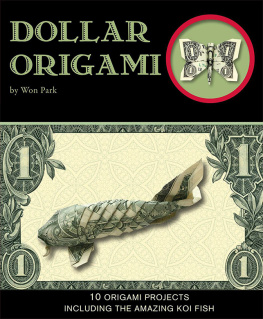
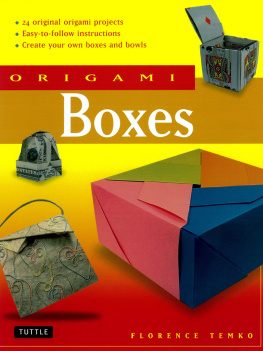


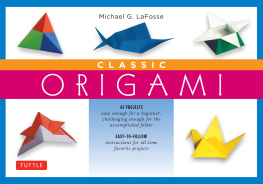
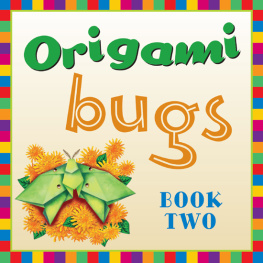
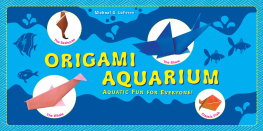
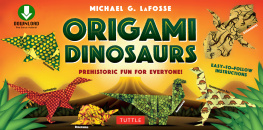
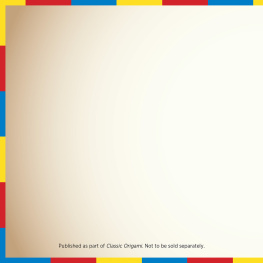
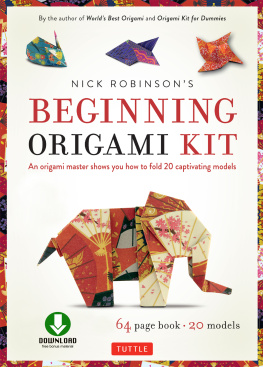
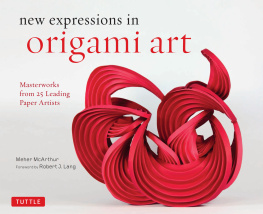

 Origami crabs displayed at the exhibition Akira Yoshizawa: The World of Creative Origami , Sano Art Museum, Mishima, 2014. 1991 age 80 Holds an exhibition entitled Origami Art: Masks in Tokyo. 1992 age 81 Is commissioned by the Japanese government to make an origami set Four Seasons in Japan for the Japanese pavilion at the Seville Expo in Spain, simultaneously exhibited at the International Exposition in Genoa. 1993 age 82 Is invited to the music festival of the people of Paris and St. 1993 age 82 Is invited to the music festival of the people of Paris and St.
Origami crabs displayed at the exhibition Akira Yoshizawa: The World of Creative Origami , Sano Art Museum, Mishima, 2014. 1991 age 80 Holds an exhibition entitled Origami Art: Masks in Tokyo. 1992 age 81 Is commissioned by the Japanese government to make an origami set Four Seasons in Japan for the Japanese pavilion at the Seville Expo in Spain, simultaneously exhibited at the International Exposition in Genoa. 1993 age 82 Is invited to the music festival of the people of Paris and St. 1993 age 82 Is invited to the music festival of the people of Paris and St.